Virus Bulletin
Copyright © 2019 Virus Bulletin
In this test – which forms part of Virus Bulletin’s continuously running security product test suite – 11 full email security solutions and five blacklists of various kinds were assembled on the test bench to measure their performance against various streams of wanted, unwanted and malicious emails.
The news in these test reports tends to be good: email security products are an important first line of defence against the many email-borne threats and, especially against the bulk of opportunistic threats, they perform really well. The news in this report is no exception, with all 11 full solutions obtaining a VBSpam award and eight of them performing well enough to earn a VBSpam+ award.
However, it is important to look beyond the spam catch rates: block rates of malware and phishing emails, though still high, were significantly lower than the block rates of ordinary spam emails.
In this test we continue to highlight the email security solutions’ performance against malware and phishing emails. In these two categories we consider emails with a malicious attachment or containing links that either lead to a site with a fake login page (traditional phishing) or that download malware. Also considered as phishing are those emails with an HTML or PDF attachment that doesn’t display malicious behaviour itself, but which contains links leading to a phishing site.
During the test we also spotted emails – missed by some of the products – with an ‘application/HTML’ MIME part, an invalid type (as mentioned in a blog post by Libraesva1), but used to bypass the filters of the email security solutions. Other difficult to block phishing emails included phishes for Netflix, Amazon and PayPal accounts.
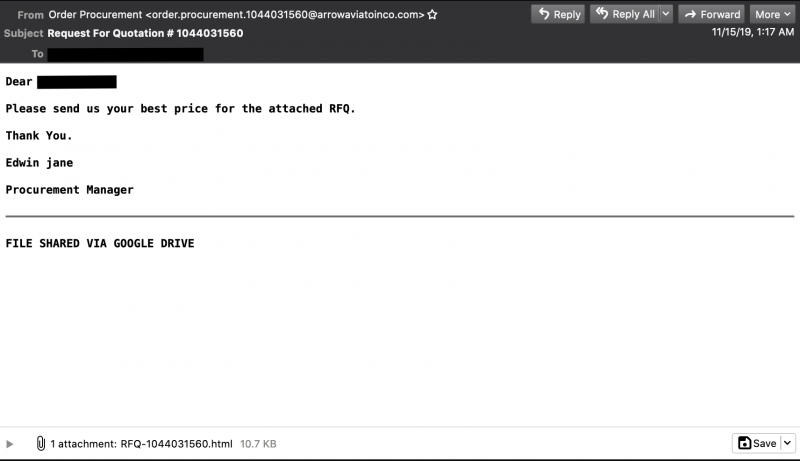 Emails containing Emotet-infected malicious attachments continued to be the most difficult to block. Even though not sent in bulk, an email containing the banking trojan IcedID was among the most commonly missed malware samples.
Emails containing Emotet-infected malicious attachments continued to be the most difficult to block. Even though not sent in bulk, an email containing the banking trojan IcedID was among the most commonly missed malware samples.
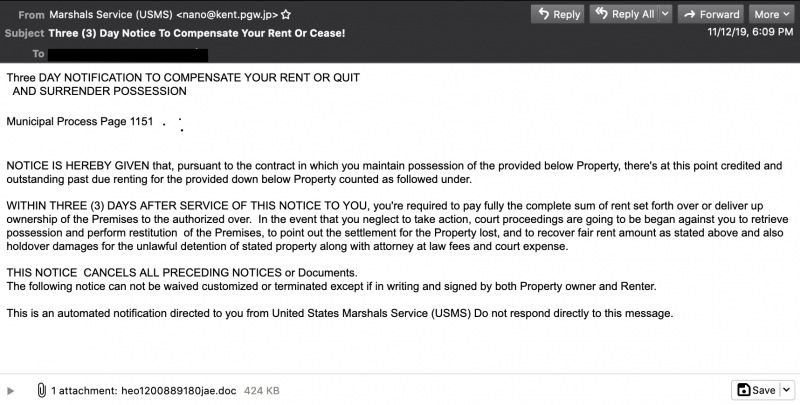 Also worth mentioning is a sextortion campaign, sent from outlook accounts, in which the emails contained password‑protected PDFs. In this case the emails went undetected by more than half of the products in test.
Also worth mentioning is a sextortion campaign, sent from outlook accounts, in which the emails contained password‑protected PDFs. In this case the emails went undetected by more than half of the products in test.
Spam catch rates continued to be high, with many products blocking 99.9% or more of the spam, but the catch rates on malware and phishing were significantly lower. All participating full solutions achieved a VBSpam award, and eight vendors – Axway, Bitdefender, ESET, Fortinet, IBM, Libraesva, Safemail and ZEROSPAM – performed well enough to achieve a VBSpam+ award.
ESET and Libraesva were the only products that didn’t miss a single email with a malicious attachment, while only ESET scored a perfect score in the phishing category, closely followed by Libraesva, which missed only one email.
New to the test bench this month is Abusix Mail Intelligence rspamd, an open-source spam filtering system written in C, extensible via Lua API and easily integrated with many open-source SMTP servers via the Milter API. AMI (rspamd) is designed to showcase the type of results you can achieve by using all AMI lists. The problem with IP and domain name blocking is that these cannot be used in certain scenarios, and these scenarios are becoming more common as spam comes up with new ways to avoid them. Additionally, the rspamd configuration doesn’t just look up the AMI IP lists on the connecting IP, it also checks each Received header hop, which provides coverage for hosts that relay spam from compromised accounts.
SC rate: 99.56%
FP rate: 0.70%
Final score: 96.04
Malware catch rate: 85.25%
Phishing catch rate: 93.91%
Project Honey Pot SC rate: 98.81%
Abusix SC rate: 99.71%
Newsletters FP rate: 1.1%
Speed:
| 10% | 50% | 95% | 98% |
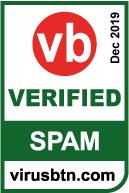
SC rate: 99.77%
FP rate: 0.00%
Final score: 99.75
Malware catch rate: 96.72%
Phishing catch rate: 97.03%
Project Honey Pot SC rate: 99.75%
Abusix SC rate: 99.78%
Newsletters FP rate: 0.5%
Speed:
| 10% | 50% | 95% | 98% |
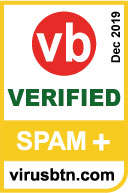
SC rate: 99.97%
FP rate: 0.00%
Final score: 99.97
Malware catch rate: 95.81%
Phishing catch rate: 98.87%
Project Honey Pot SC rate: 100.00%
Abusix SC rate: 99.96%
Newsletters FP rate: 0.0%
Speed:
| 10% | 50% | 95% | 98% |

SC rate: 99.996%
FP rate: 0.00%
Final score: 99.996
Malware catch rate: 100.00%
Phishing catch rate: 100.00%
Project Honey Pot SC rate: 99.999%
Abusix SC rate: 99.995%
Newsletters FP rate: 0.0%
Speed:
| 10% | 50% | 95% | 98% |

SC rate: 99.94%
FP rate: 0.00%
Final score: 99.94
Malware catch rate: 98.91%
Phishing catch rate: 97.73%
Project Honey Pot SC rate: 99.99%
Abusix SC rate: 99.93%
Newsletters FP rate: 0.0%
Speed:
| 10% | 50% | 95% | 98% |

SC rate: 99.85%
FP rate: 0.00%
Final score: 99.85
Malware catch rate: 92.08%
Phishing catch rate: 97.45%
Project Honey Pot SC rate: 99.94%
Abusix SC rate: 99.83%
Newsletters FP rate: 0.0%
Speed:
| 10% | 50% | 95% | 98% |

SC rate: 99.96%
FP rate: 0.00%
Final score: 99.92
Malware catch rate: 100.00%
Phishing catch rate: 99.86%
Project Honey Pot SC rate: 100.00%
Abusix SC rate: 99.95%
Newsletters FP rate: 1.1%
Speed:
| 10% | 50% | 95% | 98% |

SC rate: 99.89%
FP rate: 0.00%
Final score: 99.89
Malware catch rate: 99.69%
Phishing catch rate: 96.88%
Project Honey Pot SC rate: 99.97%
Abusix SC rate: 99.87%
Newsletters FP rate: 0.0%
Speed:
| 10% | 50% | 95% | 98% |

SC rate: 99.45%
FP rate: 0.02%
Final score: 99.35
Malware catch rate: 97.29%
Phishing catch rate: 76.91%
Project Honey Pot SC rate: 99.73%
Abusix SC rate: 99.39%
Newsletters FP rate: 0.0%
Speed:
| 10% | 50% | 95% | 98% |

SC rate: 99.12%
FP rate: 0.00%
Final score: 99.12
Malware catch rate: 96.97%
Phishing catch rate: 72.52%
Project Honey Pot SC rate: 99.32%
Abusix SC rate: 99.08%
Newsletters FP rate: 0.0%
Speed:
| 10% | 50% | 95% | 98% |

SC rate: 99.85%
FP rate: 0.00%
Final score: 99.71
Malware catch rate: 99.84%
Phishing catch rate: 99.29%
Project Honey Pot SC rate: 99.97%
Abusix SC rate: 99.82%
Newsletters FP rate: 3.8%
Speed:
| 10% | 50% | 95% | 98% |

SC rate: 99.52%
FP rate: 0.08%
Final score: 99.13
Malware catch rate: 75.78%
Phishing catch rate: 85.27%
Project Honey Pot SC rate: 98.47%
Abusix SC rate: 99.74%
Newsletters FP rate: 0.0%
SC rate: 97.40%
FP rate: 0.02%
Final score: 97.30
Malware catch rate: 65.99%
Phishing catch rate: 81.44%
Project Honey Pot SC rate: 99.10%
Abusix SC rate: 97.04%
Newsletters FP rate: 0.0%
SC rate: 96.33%
FP rate: 0.02%
Final score: 96.23
Malware catch rate: 63.04%
Phishing catch rate: 74.79%
Project Honey Pot SC rate: 97.77%
Abusix SC rate: 96.03%
Newsletters FP rate: 0.0%
SC rate: 56.56%
FP rate: 0.00%
Final score: 56.56
Malware catch rate: 7.76%
Phishing catch rate: 30.17%
Project Honey Pot SC rate: 93.23%
Abusix SC rate: 48.93%
Newsletters FP rate: 0.0%
SC rate: 88.39%
FP rate: 0.00%
Final score: 88.39
Malware catch rate: 38.98%
Phishing catch rate: 54.67%
Project Honey Pot SC rate: 93.81%
Abusix SC rate: 87.26%
Newsletters FP rate: 0.0%
| True negatives | False positives | FP rate | False negatives | True negatives | SC rate | Final score | VBSpam | |
| AMI rspamd | 4968 | 35 | 0.70% | 1154.8 | 259080.4 | 99.56% | 96.01 | |
| Axway | 5003 | 0 | 0.00% | 592 | 259635.2 | 99.77% | 99.75 | |
| Bitdefender | 5003 | 0 | 0.00% | 82.8 | 260152.4 | 99.97% | 99.97 | |
| ESET | 5003 | 0 | 0.00% | 9 | 260226.2 | 99.996% | 99.996 | |
| FortiMail | 5003 | 0 | 0.00% | 158.6 | 260076.6 | 99.94% | 99.94 | |
| IBM | 5003 | 0 | 0.00% | 400 | 259835.2 | 99.85% | 99.85 | |
| Libraesva | 5003 | 0 | 0.00% | 105.8 | 260090.4 | 99.96% | 99.92 | |
| Safemail | 5003 | 0 | 0.00% | 286.4 | 259948.8 | 99.89% | 99.89 | |
| Spamhaus DQS | 5002 | 1 | 0.02% | 1437.6 | 258778.6 | 99.45% | 99.35 | |
| Spamhaus rsync | 5003 | 0 | 0.00% | 2286.8 | 257929.4 | 99.12% | 99.12 | |
| ZEROSPAM | 5003 | 0 | 0.00% | 396.8 | 259157 | 99.85% | 99.71 | |
| AMI* | 4999 | 4 | 0.08% | 1238.2 | 258997 | 99.52% | 99.13 | N/A |
| IBM X-Force Combined* | 5002 | 1 | 0.02% | 6772.8 | 253462.4 | 97.40% | 97.30 | N/A |
| IBM X-Force IP* | 5002 | 1 | 0.02% | 9554.4 | 250680.8 | 96.33% | 96.23 | N/A |
| IBM X-Force URL* | 5003 | 0 | 0.00% | 113055.6 | 147179.6 | 56.56% | 56.56 | N/A |
| Kaspersky DNSBL* | 5003 | 0 | 0.00% | 30213.2 | 230022 | 88.39% | 88.39 | N/A |
*These products are partial solutions and their performance should not be compared with that of other products.
(Please refer to the text for full product names and details.)
| Newsletters | Malware | Phishing | Project Honey Pot | Abusix | STDev† | ||||||
| False positives | FP rate | False negatives | SC rate | False negatives | SC rate | False negatives | SC rate | False negatives | SC rate | ||
| AMI rspamd | 2 | 1.08% | 95 | 85.25% | 43 | 93.91% | 532.4 | 98.81% | 622.4 | 99.71% | 0.59 |
| Axway | 1 | 0.54% | 21 | 96.72% | 21 | 97.03% | 111.8 | 99.75% | 480.2 | 99.78% | 0.63 |
| Bitdefender | 0 | 0.00% | 27 | 95.81% | 8 | 98.87% | 0 | 100.00% | 82.8 | 99.96% | 0.14 |
| ESET | 0 | 0.00% | 0 | 100.00% | 0 | 100.00% | 0.2 | 99.999% | 8.8 | 99.995% | 0.11 |
| FortiMail | 0 | 0.00% | 7 | 98.91% | 16 | 97.73% | 5 | 99.99% | 153.6 | 99.93% | 0.26 |
| IBM | 0 | 0.00% | 51 | 92.08% | 18 | 97.45% | 25 | 99.94% | 375 | 99.83% | 0.5 |
| Libraesva | 2 | 1.08% | 0 | 100.00% | 1 | 99.86% | 2.2 | 99.995% | 103.6 | 99.95% | 0.19 |
| Safemail | 0 | 0.00% | 2 | 99.69% | 22 | 96.88% | 12.6 | 99.97% | 273.8 | 99.87% | 0.29 |
| Spamhaus DQS | 0 | 0.00% | 17 | 97.29% | 163 | 76.91% | 123.2 | 99.73% | 1314.4 | 99.39% | 0.85 |
| Spamhaus rsync | 0 | 0.00% | 19 | 96.97% | 194 | 72.52% | 303 | 99.32% | 1983.8 | 99.08% | 1.21 |
| ZEROSPAM | 7 | 3.78% | 1 | 99.84% | 5 | 99.29% | 12 | 99.97% | 384.8 | 99.82% | 0.4 |
| AMI* | 0 | 0.00% | 156 | 75.78% | 104 | 85.27% | 686.6 | 98.47% | 551.6 | 99.74% | 0.7 |
| IBM X-Force Combined* | 0 | 0.00% | 219 | 65.99% | 131 | 81.44% | 401.4 | 99.10% | 6371.4 | 97.04% | 2.75 |
| IBM X-Force IP* | 0 | 0.00% | 238 | 63.04% | 178 | 74.79% | 1000.4 | 97.77% | 8554 | 96.03% | 3.46 |
| IBM X-Force URL* | 0 | 0.00% | 594 | 7.76% | 493 | 30.17% | 3032.2 | 93.23% | 110023.4 | 48.93% | 20.4 |
| Kaspersky DNSBL* | 0 | 0.00% | 393 | 38.98% | 320 | 54.67% | 2771.8 | 93.81% | 27441.4 | 87.26% | 6.9 |
*These products are partial solutions and their performance should not be compared with that of other products. None of the queries to the IP blacklists included any information on the attachments; hence their performance on the malware corpus is added purely for information.
† The standard deviation of a product is calculated using the set of its hourly spam catch rates.
(Please refer to the text for full product names and details.)
| Speed | ||||
| 10% | 50% | 95% | 98% | |
| AMI rspamd | ||||
| Axway | ||||
| Bitdefender | ||||
| ESET | ||||
| FortiMail | ||||
| IBM | ||||
| Libraesva | ||||
| Safemail | ||||
| Spamhaus DQS | ||||
| Spamhaus rsync | ||||
| ZEROSPAM | ||||
(Please refer to the text for full product names and details.)
| 0-30 seconds | 30 seconds to two minutes | two minutes to 10 minutes |
more than 10 minutes
|
| Products ranked by final score | |
| ESET | 99.996 |
| Bitdefender | 99.97 |
| FortiMail | 99.94 |
| Libraesva | 99.92 |
| Safemail | 99.89 |
| IBM | 99.85 |
| Axway | 99.75 |
| ZEROSPAM | 99.71 |
| Spamhaus DQS | 99.35 |
| Spamhaus rsync | 99.12 |
| AMI rspamd | 96.04 |
(Please refer to the text for full product names and details.)
| Hosted solutions | Anti-malware | IPv6 | DKIM | SPF | DMARC | Multiple MX-records | Multiple locations |
| Safemail | ClamAV; proprietary | √ | √ | √ | √ | √ | √ |
| ZEROSPAM | ClamAV | √ | √ | √ | √ | √ |
(Please refer to the text for full product names and details.)
| Local solutions | Anti-malware | IPv6 | DKIM | SPF | DMARC | Interface | |||
| CLI | GUI | Web GUI | API | ||||||
| Axway | Kaspersky, McAfee | √ | √ | √ | √ | ||||
| Bitdefender | Bitdefender | √ | √ | √ | √ | ||||
| ESET | ESET Threatsense | √ | √ | √ | √ | √ | √ | ||
| FortiMail | Fortinet | √ | √ | √ | √ | √ | √ | √ | |
| IBM | Sophos; IBM Remote Malware Detection | √ | √ | √ | |||||
| Libraesva | ClamAV; others optional | √ | √ | √ | √ | ||||
| Spamhaus DQS | Optional | √ | √ | √ | √ | ||||
| Spamhaus rsync | Optional | √ | √ | √ | √ | ||||
(Please refer to the text for full product names and details.)
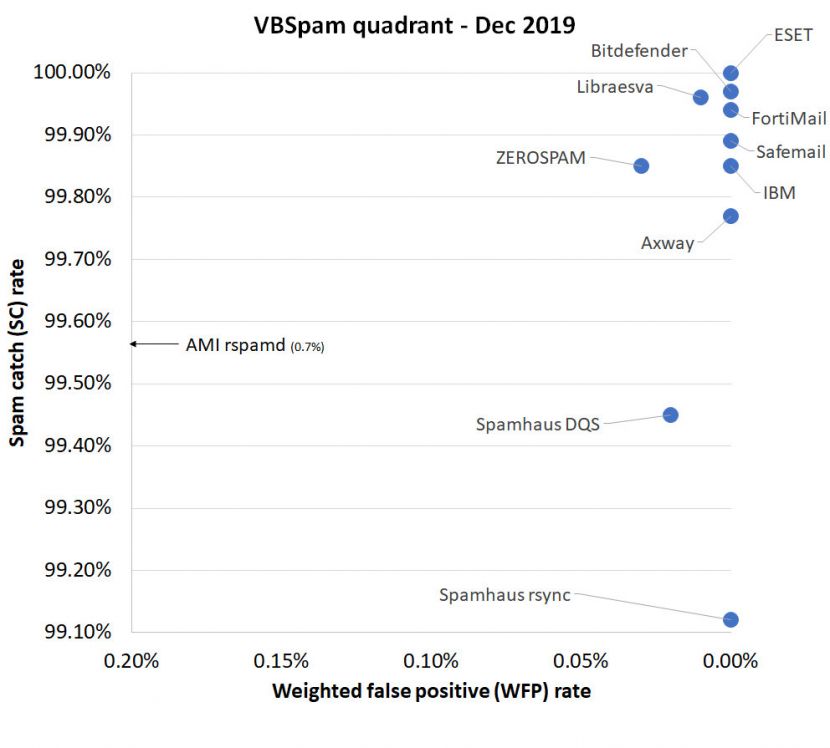 (Please refer to the text for full product names and details.)
(Please refer to the text for full product names and details.)
The full VBSpam test methodology can be found at https://www.virusbulletin.com/testing/vbspam/vbspam-methodology/.
The test ran for 16 days, from 12am on 9 November to 12am on 25 November 2019.
The test corpus consisted of 265,568 emails. 260,380 of these were spam, 44,844 of which were provided by Project Honey Pot, with the remaining 215,536 spam emails provided by Abusix. There were 5,003 legitimate emails (‘ham’) and 185 newsletters, a category that includes various kinds of commercial and non-commercial opt-in mailings.
181 emails in the spam corpus were considered ‘unwanted’ (see the June 2018 report) and were included with a weight of 0.2; this explains the non-integer numbers in some of the tables.
Moreover, 644 emails from the spam corpus were found to contain a malicious attachment while 706 contained a link to a phishing or malware site; though we report separate performance metrics on these corpora, it should be noted that these emails were also counted as part of the spam corpus.
Emails were sent to the products in real time and in parallel. Though products received the email from a fixed IP address, all products had been set up to read the original sender’s IP address as well as the EHLO/HELO domain sent during the SMTP transaction, either from the email headers or through an optional XCLIENT SMTP command2.
For those products running in our lab, we all ran them as virtual machines on a VMware ESXi cluster. As different products have different hardware requirements – not to mention those running on their own hardware, or those running in the cloud – there is little point comparing the memory, processing power or hardware the products were provided with; we followed the developers’ requirements and note that the amount of email we receive is representative of that received by a small organization.
Although we stress that different customers have different needs and priorities, and thus different preferences when it comes to the ideal ratio of false positives to false negatives, we created a one-dimensional 'final score' to compare products. This is defined as the spam catch (SC) rate minus five times the weighted false positive (WFP) rate. The WFP rate is defined as the false positive rate of the ham and newsletter corpora taken together, with emails from the latter corpus having a weight of 0.2:
WFP rate = (#false positives + 0.2 * min(#newsletter false positives , 0.2 * #newsletters)) / (#ham + 0.2 * #newsletters)
while in the spam catch rate (SC), emails considered ‘unwanted’ (see above) are included with a weight of 0.2.
The final score is then defined as:
Final score = SC - (5 x WFP)
In addition, for each product, we measure how long it takes to deliver emails from the ham corpus (excluding false positives) and, after ordering these emails by this time, we colour-code the emails at the 10th, 50th, 95th and 98th percentiles:
| (green) = up to 30 seconds | |
| (yellow) = 30 seconds to two minutes | |
| (orange) = two to ten minutes | |
| (red) = more than ten minutes |
Products earn VBSpam certification if the value of the final score is at least 98 and the ‘delivery speed colours’ at 10 and 50 per cent are green or yellow and that at 95 per cent is green, yellow or orange.
Meanwhile, products that combine a spam catch rate of 99.5% or higher with a lack of false positives, no more than 2.5% false positives among the newsletters and ‘delivery speed colours’ of green at 10 and 50 per cent and green or yellow at 95 and 98 per cent earn a VBSpam+ award.
1 https://www.libraesva.com/email-trojan-horse-application-html-entity/.